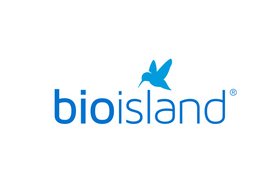









Recently viewed
Rapid Antigen Tests
In this day and age, a negative COVID-test is a requirement for a lot of things. On top of that, having a negative COVID test provides some reassurance to people, making them feel more comfortable when going out, seeing family and friends, or if they're exhibiting symptoms and aren't sure if they have COVID.
At the start of the pandemic, test kits were few and far between, making it hard for people to get a COVID test result. However, a rapid antigen test is now readily available in Australia and allows people to test themselves at home, without having to get an expensive PCR test.
Rapid antigen testing works by testing the sample taken from the patient for specific antigens that indicate if a person can transmit COVID-19 to other people. A positive rapid antigen test result is generally seen as accurate and could be a great way for you to keep yourself and the people around you safe from infectious disease.
What Is a Rapid Antigen Test?
As the name suggests, a rapid antigen test tests patients for specific antigens that indicate they can transmit COVID-19. Compared to a PCR test, antigen tests are significantly more affordable and can save patients a trip to the testing clinic and avoid long lines.
The results of a rapid antigen test can arrive within 15 minutes, which is significantly shorter than a traditional PCR test, which can take up to a couple of days. A rapid antigen test is also much more simple to conduct than PCR tests since patients don't have to send their samples to a lab for interpretation.
With rapid antigen tests, patients only have to drop a couple of drops of the sample onto a testing cassette, and then they can view their negative result or positive test result after a few minutes. With a PCR test, the samples have to be sent to a lab where they undergo a complex process before technicians can determine the results.
While rapid antigen tests are more affordable, faster, and generally easier to administer than a standard PCR test, there are some caveats. For starters, rapid antigen testing can only detect COVID-19 transmissibility in a person within a smaller time window compared to a PCR test.
Are Rapid Antigen Test Results Accurate?
Yes, rapid antigen tests are generally considered accurate by experts in the field. However, it's important to remember that rapid antigen testing can only detect COVID-19 transmissibility. So, you will only test positive with a rapid antigen test if you have a high viral load in your nasal cavity or mouth, depending on if you're taking an oral test or need a nasal swab.
So, the positive rapid antigen test result or negative test result will only be valid for that day. For example, if a person used a rapid antigen test kit on Wednesday and got a negative test result, that only ensures that they are negative for that day and still pose a risk of testing positive the next day.
Rapid antigen tests also have a smaller window of detecting COVID-19 infections. While other tests like the PCR test can detect COVID-19 infections for a longer period of time, rapid antigen test kits only have a specific window where they can detect infections, which is why individuals need to undergo rapid antigen testing more frequently than PCR tests and other COVID-19 detection methods.
How To Use Rapid Antigen Test Kits
If you have decided to use a rapid antigen test at home, then you have to ensure that you are testing the patient properly. If you don't go through the proper procedure, you risk getting a false result, which is why it's crucial to carefully read all the instructions provided on the test kit, especially when conducting an antigen self-test.
Following the instructions poorly or not doing the test right can result in a false negative or false positive test result, which is something to avoid when trying to learn about one's own COVID-19 status.
Accurate test results can help us determine if we can infect other individuals with COVID-19, especially high-risk individuals. So, it's always important to make sure that the antigen tests and performed correctly.
Whether you purchase an oral or nasal antigen test, here are the general instructions for conducting a rapid antigen test at home. However, always remember to read the instructions on the packaging as different testing kits might have slightly different instructions.
Prepare For Testing
The first step is to prepare for testing. If you are testing yourself, this means preparing a safe space where you can conduct the test as well as prepare the proper disposal methods. Testing kits for COVID-19 usually come with all the necessary materials you will need to conduct the test, so all you have to do is remove them from the box and prepare for the test.
If you are conducting the test on another person, you have to make sure to wear the proper PPE or personal protective equipment. This includes gloves, a mask, and other protective gear to protect yourself against infection just in case the person you are testing tested positive for COVID-19.
Extract the Sample
Once all the materials are prepared, the next step is to collect the sample. Different tests require different samples. For example, some kits test nasal viral loads of different individuals, while other tests check the oral viral loads of individuals. If you decided to buy an oral COVID-19 antigen testing kit, then you will have to fill the tube with saliva up until the indicated line.
For first-timers, this may seem tiring and tough to accomplish, but always make sure to fill up the sample tube with all the necessary saliva. That way, you can avoid getting an invalid result on your test. Antigen tests can be an effective screening tool to determine a person's COVID-19 infection status, but test results are only reliable when the test is done properly.
If your test kit requires a nasal swab, then you might have to call someone else to collect the sample for you. To do this, slightly tilt your head backwards and have the person insert the nasal swab into your lower nasal cavity and collect the sample. Never use the same swab to test two individuals and once the sample is collected, make sure to toss out the swab for extra safety.
Add Buffer To the Tube
Before you can test the sample for COVID-19, you will need to add the buffer to the tube. The buffer is s chemical solution that allows the cassette to detect whether or not someone is positive for COVID-19. There are some tests that may already have the buffer mixed into the tube, while there are others that will require you to add 10 drops of the buffer yourself.
Either way, always make sure that you have the right amount of buffer to mix with the sample to get the most accurate results possible.
Insert the Sample In the Tube
Once the buffer is added to the tube, you will need to add the sample into the tube. This is specifically for nasal swab tests as you will need to mix in the biological material with the buffer before dropping it onto the cassette. If you're using an oral test, then all you need to do is add the buffer and then mix it with your sample. But for nasal tests, you will need to swirl the swab around the buffer a couple of times to ensure that it is mixed.
Then, pulling out the sample from the tube, make sure to lightly squeeze the tube to extract all the liquid from the swab. This is a very important step to remember as failure to do that can result in inaccurate results that can put you and other people at high risk of conducting COVID-19.
Drop Sample Into Test Cassette
Once the swab and sample have been mixed with the buffer, you can drop the mixture onto the cassette. The cassette has a specific area wherein you drop the sample. Some tests will require you to attach a nozzle to the tube so you can easily drop it onto the cassette, while others have the nozzle built-in already.
For accurate results, it's recommended to put 3-5 drops of the sample at a 90-degree angle to the cassette. This will ensure that you put the appropriate amount to test a person's viral load while also preventing any of the samples from dropping or spilling.
Wait
Once the specimen is on the cassette, you will have to wait between 10-15 minutes for the results. An antigen test determines whether or not a person has a high enough viral load to transmit COVID-19 to other people. Some tests may take up to 30 minutes to generate the result, so always make sure to read the further information on the instructions on the testing kit to ensure that you wait the appropriate amount of time.
Read the Result
Once the timeframe has passed, you can read the result of your test. The first line to look at is the "C" line which stands for control. This line needs to be present on the test, even if it's very faint as this indicates that the test was performed correctly.
If you don't see a control line, then you will have to conduct a second test because the positive or negative results of that test will be invalid.
If the patient tested positive, then the test result will show a coloured line in the lower section of the result of the "T" line. Even if this line is faint, the test result should be considered a positive result and the patient should isolate immediately and inform their doctor and close contacts that they have tested positive.
If there is no "T" line in the lower window, this indicates a negative result and the patient can relax for the day. However, keep in mind that a negative test result doesn't mean that you won't be transmissible tomorrow, which is why experts recommend that people get tested with rapid antigen tests every 3-7 days.
Rapid Antigen Test vs PCR Tests
The rapid antigen test is considered the main alternative to the polymerase chain reaction or PCR test. Generally, PCR testing is more expensive and requires a more complex process. However, PCR tests are considered the standard as they can provide more accurate results compared to a standard antigen test.
This is because a PCR test, compared to an antigen self-test, doesn't just detect antigens. Instead, the sample of a PCR test has to be sent to another lab, where a technician has to process the sample before testing it. So, you can rely on a negative or positive PCR test result more than an antigen test result.
However, the antigen test device is still considered accurate enough for people to use it on themselves. If you test negative with an antigen test, then that means you don't have a viral load high enough to transmit COVID-19 for that day. With that said, you could still test positive for COVID-19 through an antigen test the next day if you develop a higher viral load.
Using Antigent Test Kits at Home
You can use the antigen test device at home to test members of the family and yourself for COVID-19. The test results are generally considered accurate, though a PCR test will be able to detect much more than if you carry a high viral load on the day of the test.
An antigen self-test is a great way to keep you and your close contact safe whenever gathering for an activity, or even to check your infection status if you develop mild symptoms.
For your own safety and the safety of everyone around, make sure to immediately isolate if ever you test positive for COVID-19 whether you used a self-test or went to the testing clinic for a PCR test.
FAQs
How Long Does It Take COVID-19 Symptoms To Disappear?
On average, it can take up to 4-5 days for COVID-19 symptoms to appear once an individual is infected. However, antigen tests can only detect the presence of COVID-19 while the individual has a high viral load in their system, which will usually only mean the days they can transmit the disease. The length of the symptoms vary from person to person, but it can take up to 14 days for the symptoms to completely disappear.
How Often Do I Need To Take An Antigen Test?
For personal safety, it's recommended for people to take an antigen test every 3-4 days. Since the antigen test only checks the individual's viral load at the time of testing, regular tests are needed to get a good and accurate view of an individual's status.
What Do I Do If I Test Positive For COVID-19?
If you test positive for COVID-19, the first step is to immediately isolate and inform all of the close contacts that you have tested positive. That way, your contacts can start isolating themselves and getting tested after a couple of days to wait for the incubation period to pass. It's also recommended to inform your doctor as soon as possible and keep a close eye on your own symptoms.
Is It Necessary To Get a PCR Test After a Negative Rapid COVID-19 Test?
If your lateral flow test is positive, it is highly recommended that you have an additional COVID-19 PCR test to confirm the result. If your lateral flow is negative, it is not necessary to have a follow-up COVID-19 PCR test.











